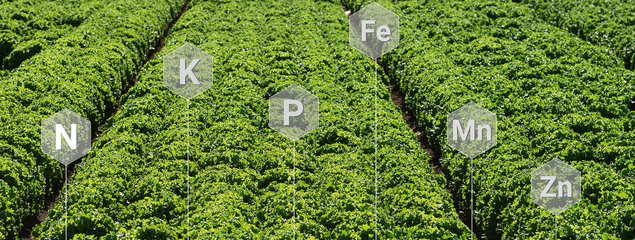
Improve Plant Nutrition
Fertilizer Guidelines for Vegetable Crops in Arizona
Crop Fertilizer Guidelines (3)
Broccoli and Cauliflower (3.2)
Broccoli is typically seeded in double rows on 40–42 inch beds, while cauliflower is transplanted into single row beds of 36-40 inches width (Figures 3-2-1 and 3-2-2). During germination, broccoli is irrigated with sprinklers and irrigation is applied with furrows after stand establishment. Transplanted seedlings of cauliflower are irrigated with sprinklers or furrows at planting and all subsequent irrigations are applied with furrows. Although grown differently, results of studies conducted by the author show that these crops have similar nitrogen (N) fertilizer requirements. Both crops can accumulate up to 300 lbs of N/acre in a cropping season in the above-ground biomass, but (N) recovered from the harvested heads or crowns is typically less than 40% the total N accumulation in plant tissues (Table 3-2-1). The amounts of N recovered in a season often depends on the number of harvests. Although these crops are generally harvested twice, the number of harvests can be greater depending on market conditions.
Under efficient irrigation management, optimal yields for these crops can be obtained typically with N fertilizer rates that are under 250 lbs/acre. However, the actual optimal N rate under a given set of conditions depends on residual soil nitrate-N. The nitrogen uptake by these crops through thinning and cultivation operations is less than 10 lbs/acre, and often these requirements are met with the pre-plant phosphorous (P) fertilizer (i.e., MAP) application. If pre-plant (P) requirements are low, supplemental early season N application could be needed (Section 2.1). About 10-40 lbs of N/acre can be applied pre-plant or through the sprinklers during germination and emergence.
For most vegetables, including broccoli and cauliflower, the main seasonal N application occurs immediately following thinning and during cultivation operations. Current recommendations call for N fertilization of these crops when soil nitrate-N test levels are less than 30 ppm. The rate of application being dependent on difference between this threshold and the measured soil test nitrate-N level. About 4 lbs of N/acre needs to be added to raise the soil test nitrate-N level by 1 ppm. A late season furrow water run of N may be required if soil nitrate-N levels drop below 20 ppm.
There is a small acreage of drip irrigated broccoli and cauliflower in Arizona. Given the high frequency and low dose irrigation that is characteristic of drip systems, N fertilizer N fertilizer is applied through fertigation. Further discussion on this topic can be found in Section 4.3.
Broccoli and cauliflower show response to P fertilization for soil P levels not exceeding 30 ppm Olsen P (Table 3-2-2). Compared to the default application method, which is broadcast, the P fertilizer application rate can be reduced by 25-35% if the fertilizer is applied in bands near the seed or strip applied in beds. No consistent results were observed to starter P for these crops under conditions where soil test P levels are above 30 ppm. However, the probability of crop response to starter P increases as temperatures cool. Thus, the use of starter P fertilizer after October 20 plantings could be beneficial.
No crop response has been observed by broccoli and cauliflower to potassium (K) fertilization in Arizona (see Section 2.3 for further discussion). Nonetheless, it is prudent to conduct occasional soil tests to verify if the AA K levels are greater than 150 ppm (Section 2.3). It may also be beneficial to run occasional leaf tissue tests to assess if leaf K concentrations are greater than a threshold of 2% (Section 4.3).
Among the micronutrients, zinc (Zn) is currently the only nutrient that may occasionally be needed as a fertilizer application for broccoli and cauliflower production in Arizona. The Zn fertilizer guidelines developed for vegetable crops grown in the region, based on DPTA soil tests, are summarized in Section 2.5. Generally, leaf tissue Zn concentrations should not fall under 30 ppm for broccoli and cauliflower (Section 4.3).
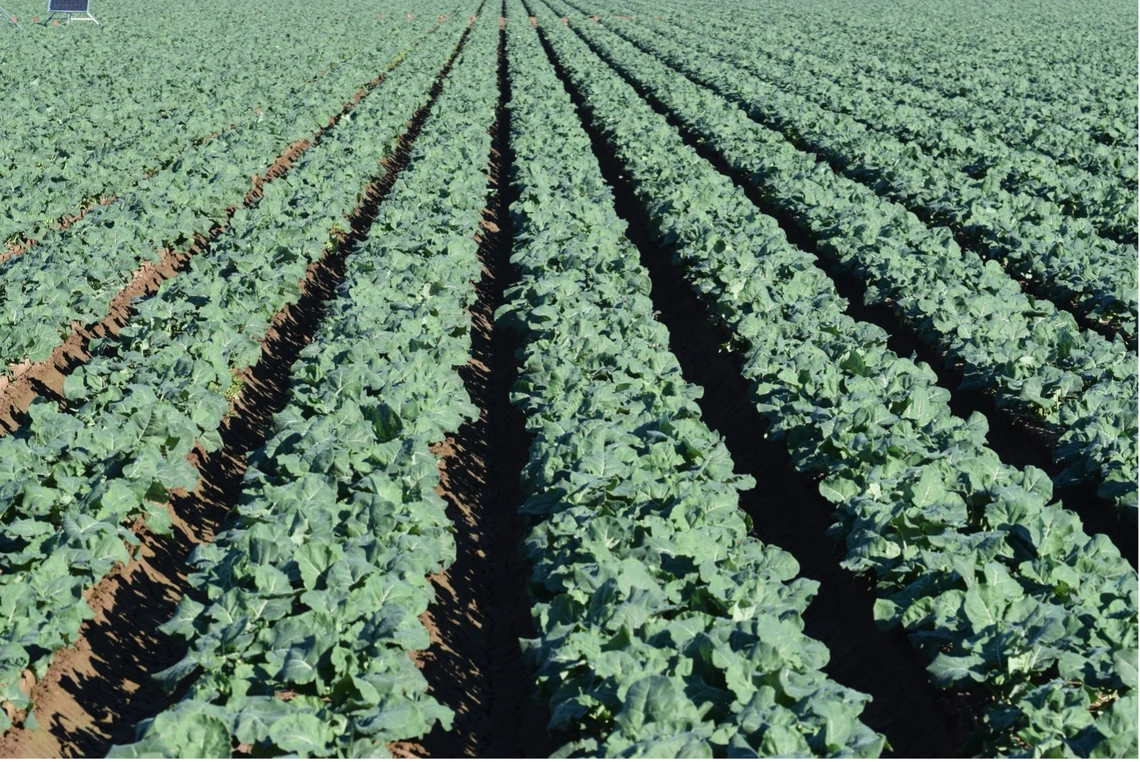
Figure 3-2-1
Broccoli in eastern Yuma County
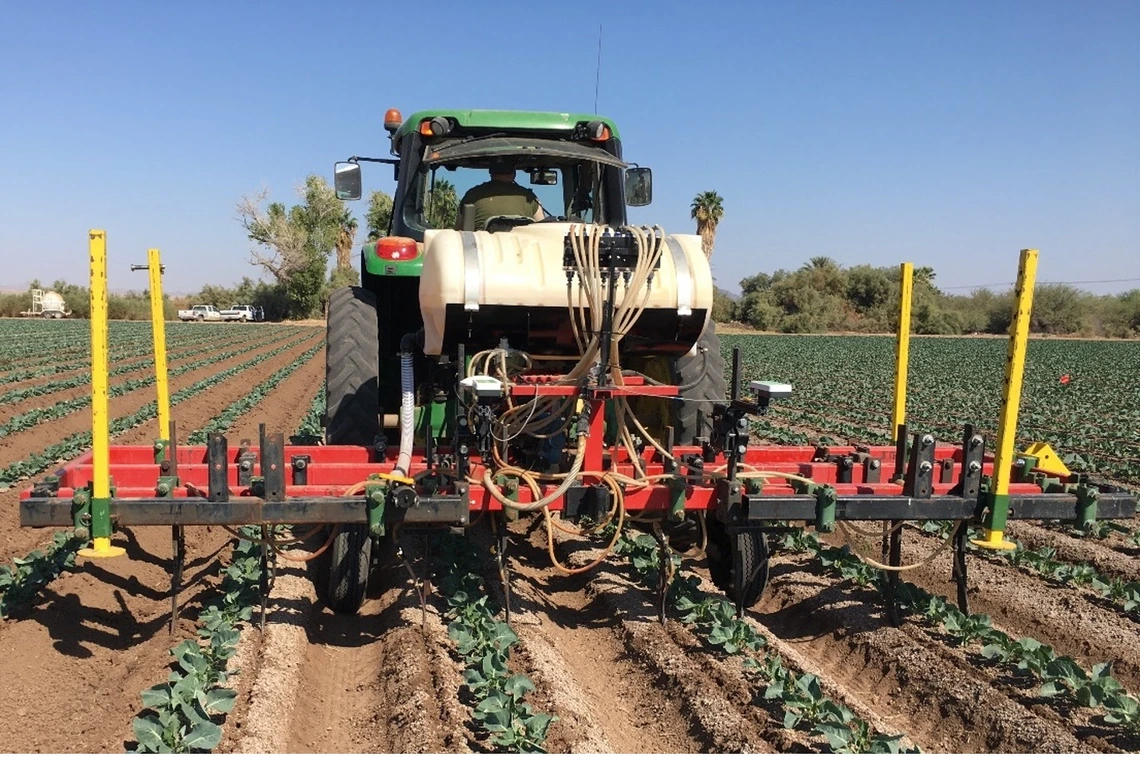
Figure 3-2-2
Side dress N fertilizer application in a cauliflower field near Yuma
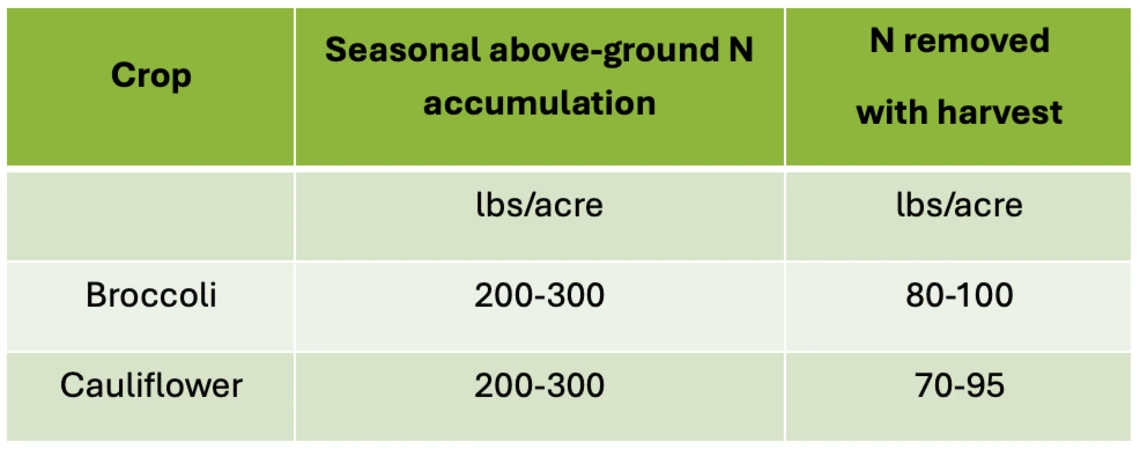
Table 3-2-1
Ranges for total above-ground N accumulation and removal of N at harvest
Adapted from several sources (7, 11, 12, 13, 14).
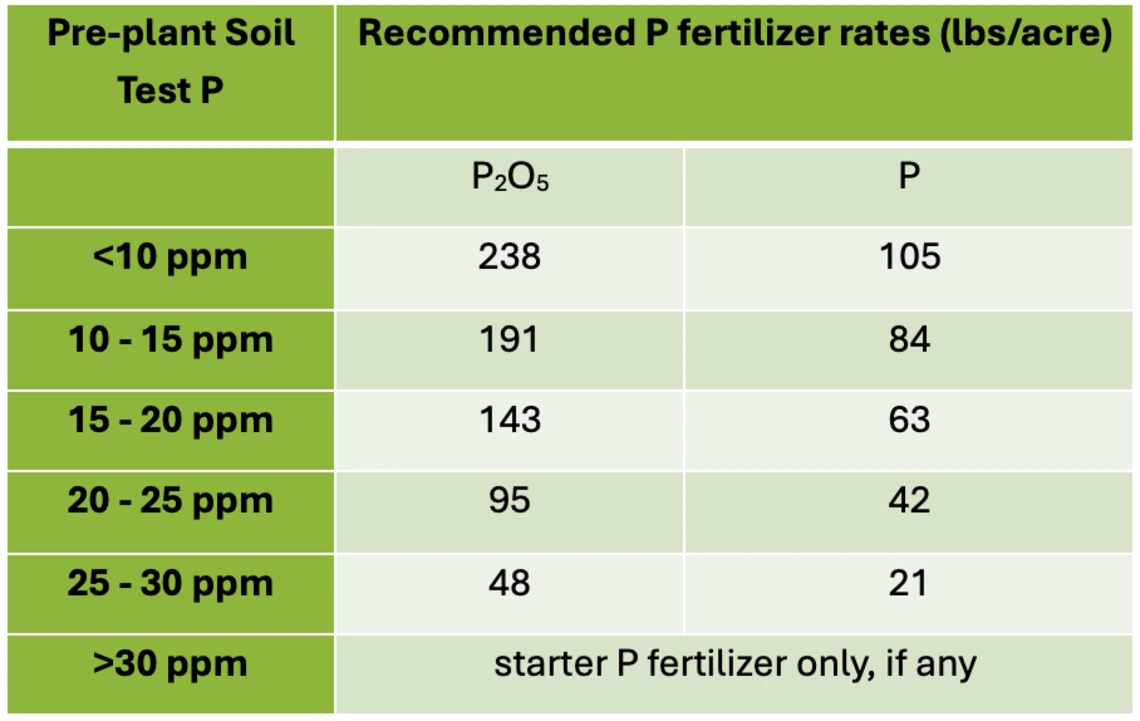
Table 3-2-2
Broccoli and cauliflower P fertilizer guidelines by pre-plant Olsen P soil test.
Starter is most effective for broccoli and cauliflower planted after October 20.

